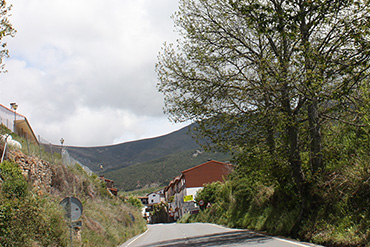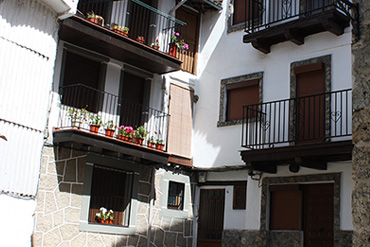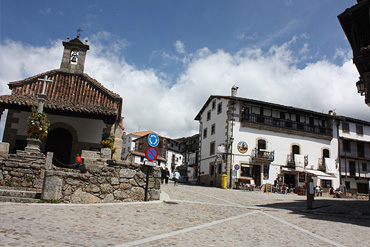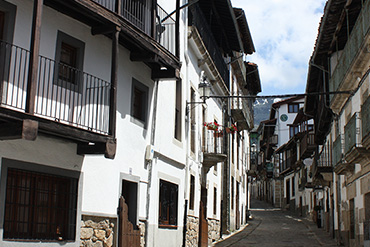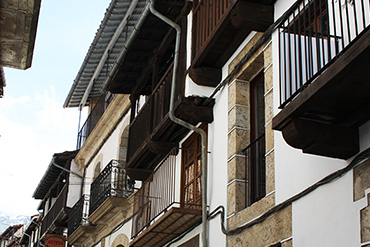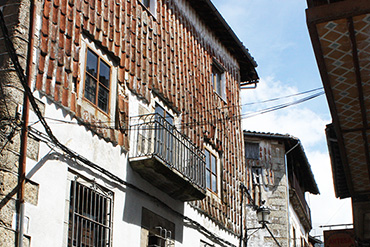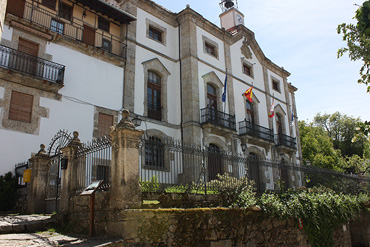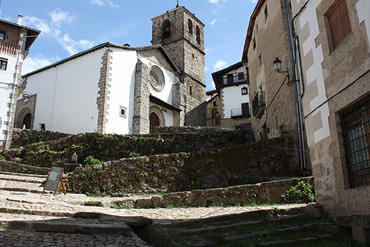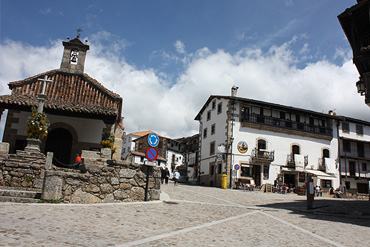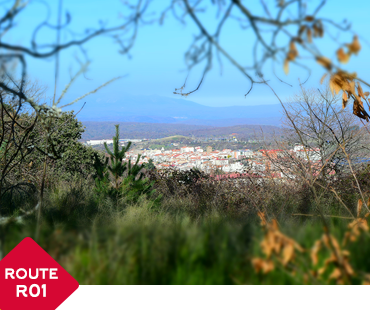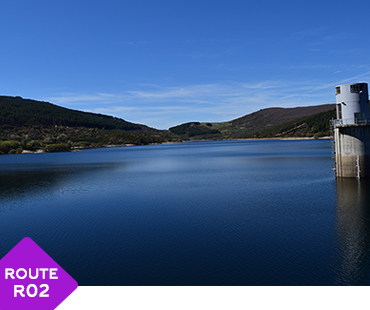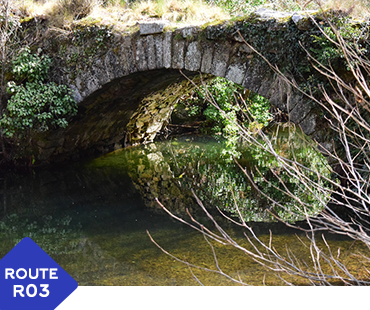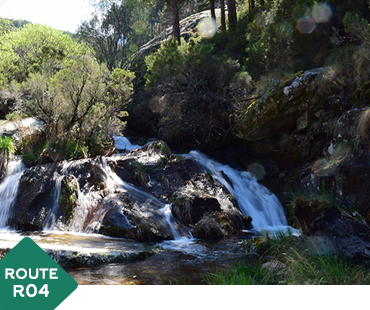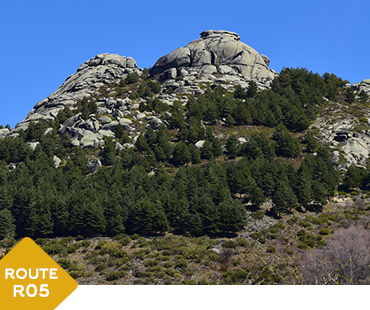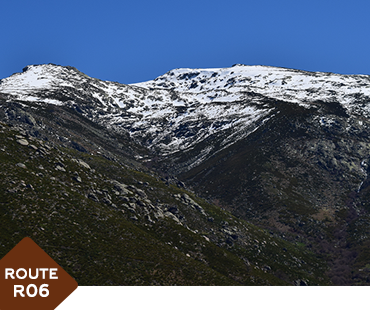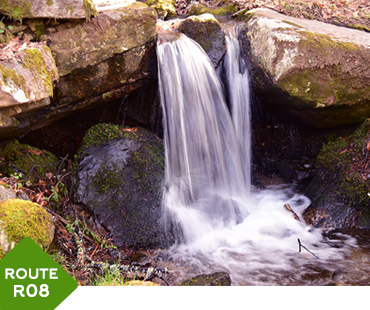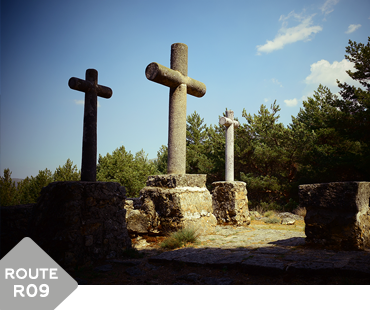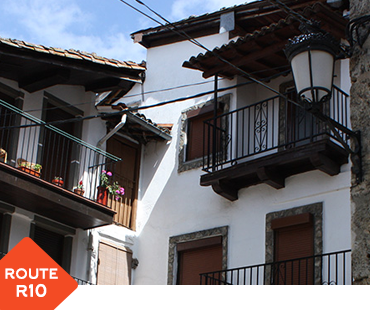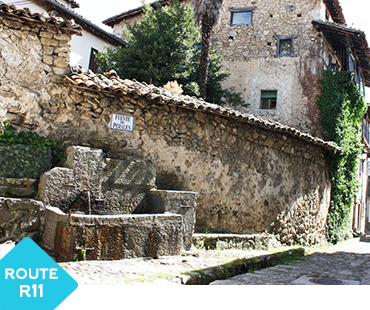R10 Candelario Route | Features
Route Information
Information
Route Technical Information
You will climb towards the village taking in views of the landscape, views of woods, meadows and orchards. After passing a curve, Candelario appear before you, nestled in the side of the mountains, below the snowy peaks.
Candelario makes for a peaceful, soothing image. An image of hues of white, of terracotta and lots of greenery. It’s like a picture postcard of today and yesteryear, a fusion of the present and the past.
Candelario is one of the most beautiful villages in Spain, so it's not surprising that it’s one of the most popular tourist hubs in the province of Salamanca.
It still has the charm and distinguishing features of mountain villages, which make it authentic and unusual. Its typical architecture has been conserved, with its narrow, steep streets and its granite houses, with centuries of history. The majority of the houses in the town have three floors, some with a stately air about them.
The village was declared a site renowned for history and art in 1975 and forms part of the Route of Historical sites of Salamanca.
The breathtaking scenery around the village, which is surrounded by woods and meadows, by snow and streams and by the pure water which descends through gorges and streams, surprises visitors.
Upon entering the village, you will find yourself in front of the chapel of the Holy Christ (Santísimo Cristo), with an image of him to be found inside.
To the left, behind the chapel, you will find the tourist information centre and car park. Beside the tourist information centre, there is a sculpture dedicated to a colony of Asturian pastors, who are credited with founding the village.
In the surrounding area, there are several cafes, which can provide you with food and drink to recharge your batteries.
The visit starts in the “Humilladero” square, from which any of the cobbled streets ascend parallel towards the top of the village.
The narrow, winding and crossing streets, allow you to pass from one to another, making the town a labyrinth to walk around with your eyes wide open and a camera ready to take in and capture things around every corner.
The majority of the houses still have the typical architecture of mountain towns, with strong walls made of stone and chestnut wood.
The “casa chacinera” (the pork house) is made up of three floors. The ground floor, called the entrance or the courtyard, was set up for the slaughter of the pigs. The first floor, with balconies, is the house (the living area) with the bedrooms and the kitchen. The second floor, called the attic, with a balcony or veranda, was used to cure the meat. The balcony is covered by an overhanging roof. The houses had no chimney so the smoke rose to the attic and cured the meat.
The doors are made of chestnut wood, with a door knocker and are protected by a “batipuerta”, which is an outer door half the height of the other situated in front of the main door which protects the entrance to the home, and allows it to be open so that the light can enter.
The Regaderas (streams typical of Candelario) and fountains in the village mean you are constantly surrounded by the trickling of water. Regaderas are water channels which flow through the streets to keep them clean and irrigate the meadows and orchards.
Fourteen fountains form a part of this urban architecture and are spread throughout the village. Almost all of them have their own natural springs. Their beauty and localness have attracted the attention of many painters and poets.
In the high part of the village, the part called La Cuesta de la Romana (the Roman’s Hill), you will find the church and the town hall.
The town hall building is an example of civil architecture of the late 19th century. Its imposing facade stands out and inside you can see a beautiful staircase with carved masonry.
A few steps further, you will find the Parish church, dedicated to Our Lady of the Assumption, work on which was competed in the sixteenth century. The main facade, called the Castañar (chestnut grove), stands out because of its unique gothic-style rosette.
Inside it’s made up of three naves, one central and two laterals, separated by big arches. On the ceiling there are tableaus and images in different styles; Romantic, Mudéjar, Gothic and Renaissance.
On the descent, keep an eye out for the “Casa Chacinera” museum, to see a theatrical interpretation of the chacinera village lifestyle.
In addition, you will have the opportunity to see some examples of traditional outfits which are worn for important celebrations. The men's outfit is called “Choricero” (the chorizo maker) and the women's one, of great wealth and originality, is called “Candelaria”. The women's outfit is complemented by a hairstyle which consists of a bow facing forward, from which hangs a black velvet ribbon.
The second Sunday of August is worth a mention because it represents the traditional wedding, reviving customs of the nineteenth century.
The meat from the village, a symbol of quality and purity, is cured with the pure mountain air. An interesting fact to mention is that these meats were consumed in the Royal Court of King Charles IV; King Alfonso XII awarded them the Royal crest.
Along the walk, you will find many bars and restaurants where you will be able to take a break and taste some local delicacies. There are also shops to buy typical local products.
If you have some extra time to spare, head towards the park to enjoy the views and fill your spirit with the peace and tranquility that will surround you in this natural space.
Any time of year is good to visit Candelario, because every season offers a different take on the area, which is always beautiful.
You will then leave the chacinera village (famous for pork meat), leaving behind a hard-working municipality, self-made, in harmony with its natural surroundings, with oak and chestnut woods, with ascents of more than 2000 metres and snow on its peaks.
- Start: Candelario
- 1st point of interest : Candelario Town Hall
- 2nd point of interest : Our Lady of the Assumption Church
- 3rd point of interest : Casa Chacinera (the pork house)
- 4th point of interest Casas Señoriales Houses (Stately houses)
- ***
- Useful phone numbers
- Town Hall phone number: 923 413 011
- Turism Office phone number: 923 413 420
- Emergency phone number: 112
- Police phone number: 062
Routes around Candelario
In nature and urban
- Difficulty: LOW
- Duration aprox: 2 hours
- Distance: 7,2 KM - ROUND TRIP
- Videoguide English: VIEW
- Difficulty: LOW
- Duration aprox: 2:40 hours
- Distance: 9,2 KM - ROUND TRIP
- Videoguide English: VIEW
- Difficulty: LOW
- Duration aprox: 1:40 hours
- Distance: 5,5 KM - ROUND TRIP
- Videoguide English: VIEW
- Difficulty: AVERAGE
- Duration aprox: 1:25 hours
- Distance: 4,2 KM - ROUND TRIP
- Videoguide English: VIEW
- Difficulty: AVERAGE
- Duration aprox: 3 hours
- Distance: 9 KM - ROUND TRIP
- Videoguide English: VIEW
- Difficulty: LOW
- Duration aprox: 1:40 hours
- Distance: 5,8 KM - ROUND TRIP
- Videoguide English: VIEW
- Difficulty: LOW
- Duration aprox: 1:05 hours
- Distance: 3 KM - ROUND TRIP
- Videoguide English: VIEW
- Difficulty: LOW
- Duration aprox: Free
- Distance: CIRCULAR
- Videoguide English: VIEW
- Difficulty: LOW
- Duration aprox: 1:20 hours
- Distance: 4 KM - CIRCULAR
- Videoguide English: VIEW
